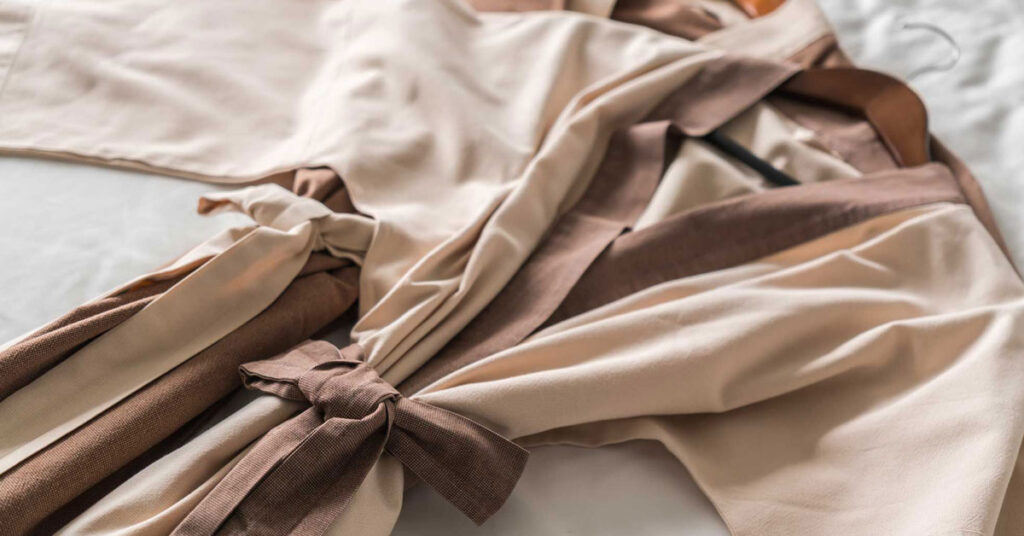How to Prevent Cotton and Satin from Pilling

Fabric compatibility is crucial in fashion and sewing, impacting both the aesthetic and functional aspects of a garment. Cotton and satin, each with unique properties, can be a delightful combination if handled correctly. In this article, you’ll learn how to prevent these fabrics from pilling and ensure they complement each other beautifully in your projects.
Compatibility Analysis
Yes, cotton and satin can be mixed, but with careful consideration. Cotton, a natural fiber, offers breathability and comfort, while satin, often made from silk or synthetic fibers, provides a luxurious sheen and smooth texture. These fabrics can work together if their differences are managed effectively.
Key Factors
- Texture: Cotton is soft and matte, whereas satin is smooth and shiny. Their contrasting textures can add visual interest.
- Weight: Cotton can vary from light to heavy, while satin is typically lightweight. Matching similar weights can prevent imbalance.
- Stretch: Cotton has minimal stretch unless blended with elastane, while satin can vary depending on its fiber content.
- Care Requirements: Cotton is generally more durable and easier to care for compared to satin, which may require delicate handling.
- Durability: Both fabrics are durable, but satin is more prone to snags and requires careful maintenance.
Fabric Properties Comparison Table
| Property | Cotton | Satin |
|---|---|---|
| Fiber Content | Natural | Natural/Synthetic |
| Weight and Thickness | Varies (light to heavy) | Light |
| Breathability | High | Moderate |
| Stretch and Elasticity | Low | Varies |
| Wrinkle Resistance | Moderate | Low |
| Care Instructions | Warm wash, iron hot | Cold wash, iron low |
| Durability | High | Moderate |
Benefits of Mixing These Fabrics
- Enhanced Texture and Visual Interest: The contrast between cotton’s matte finish and satin’s sheen creates a sophisticated look.
- Improved Comfort and Performance: Cotton’s breathability combined with satin’s smoothness offers comfort.
- Better Drape and Movement: Satin adds fluidity, while cotton provides structure.
- Cost-Effectiveness: Using cotton with satin can reduce costs while maintaining a luxurious feel.
- Seasonal Versatility: This combination can be adapted for both warm and cool weather.
- Design Possibilities: Mixing these fabrics allows for creative garments and home decor items with unique textural elements.
Potential Challenges
- Different Shrinkage Rates: Pre-wash both fabrics to minimize differences.
- Conflicting Care Requirements: Opt for the gentlest care routine suitable for both.
- Texture Clash or Pilling: Use fabric softeners and avoid high friction areas.
- Seam Puckering: Use appropriate thread tension and stitch length.
- Color Bleeding or Fading: Test for colorfastness before combining.
Practical Solutions
- Pre-washing: Always pre-wash fabrics to prevent shrinkage and color issues.
- Seam Techniques: Use French seams or serging to reduce puckering.
- Careful Handling: Handle satin with care to avoid snags and maintain its sheen.
Sewing & Styling Tips
- Sewing Techniques: Use a walking foot to manage fabric layers smoothly.
- Needle and Thread: A size 70/10 needle and polyester thread work well.
- Interfacing and Stabilizer: Use lightweight interfacing to support delicate areas.
- Seam Finishing: French seams or overlocking provide clean finishes.
- Pattern Selection: Choose patterns that highlight both fabrics’ strengths.
- Styling Ideas: Pair a satin blouse with cotton trousers for an elegant look, or use them in home decor for a touch of luxury.
Care & Maintenance Guide
- Washing Instructions: Use cold water and a gentle cycle to protect both fabrics.
- Drying Recommendations: Air dry or use a low heat setting.
- Ironing and Steaming Tips: Iron cotton on a higher setting; use a press cloth for satin.
- Stain Removal: Treat stains promptly with appropriate cleaners for each fabric.
- Long-term Care: Store garments properly to avoid creasing and damage.
FAQ Section
-
Can you wash cotton and satin together?
Yes, use a gentle cycle and cold water to protect both fabrics. -
Will cotton shrink more than satin?
Cotton tends to shrink more; pre-wash both fabrics to minimize this issue. -
What needle size should I use for sewing cotton and satin together?
A size 70/10 needle is recommended for these fabrics. -
Can you mix cotton and satin in one garment?
Absolutely, this combination can create stunning visual and textural contrast. -
How do you prevent pilling when combining these fabrics?
Use fabric softeners and minimize friction during wear and washing. -
Is it okay to mix cotton and satin for upholstery?
Yes, but ensure both fabrics are suitable for the intended use and care requirements. -
What’s the best way to finish seams with cotton and satin?
French seams or serging are ideal for a clean, professional finish.
By understanding the characteristics and care of cotton and satin, you can enjoy the benefits of combining these fabrics while preventing common issues like pilling. With the right techniques and attention to detail, your projects will showcase the best of both materials.


Leave a Reply